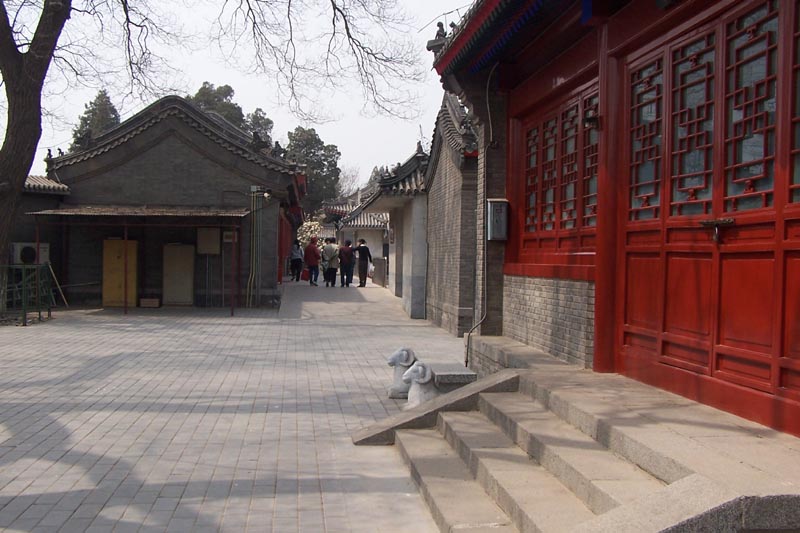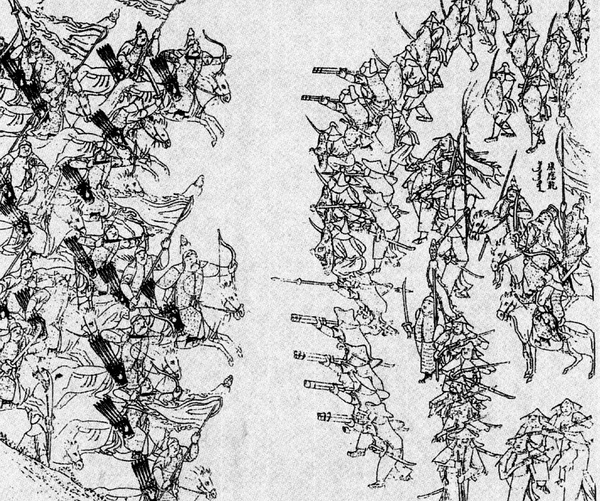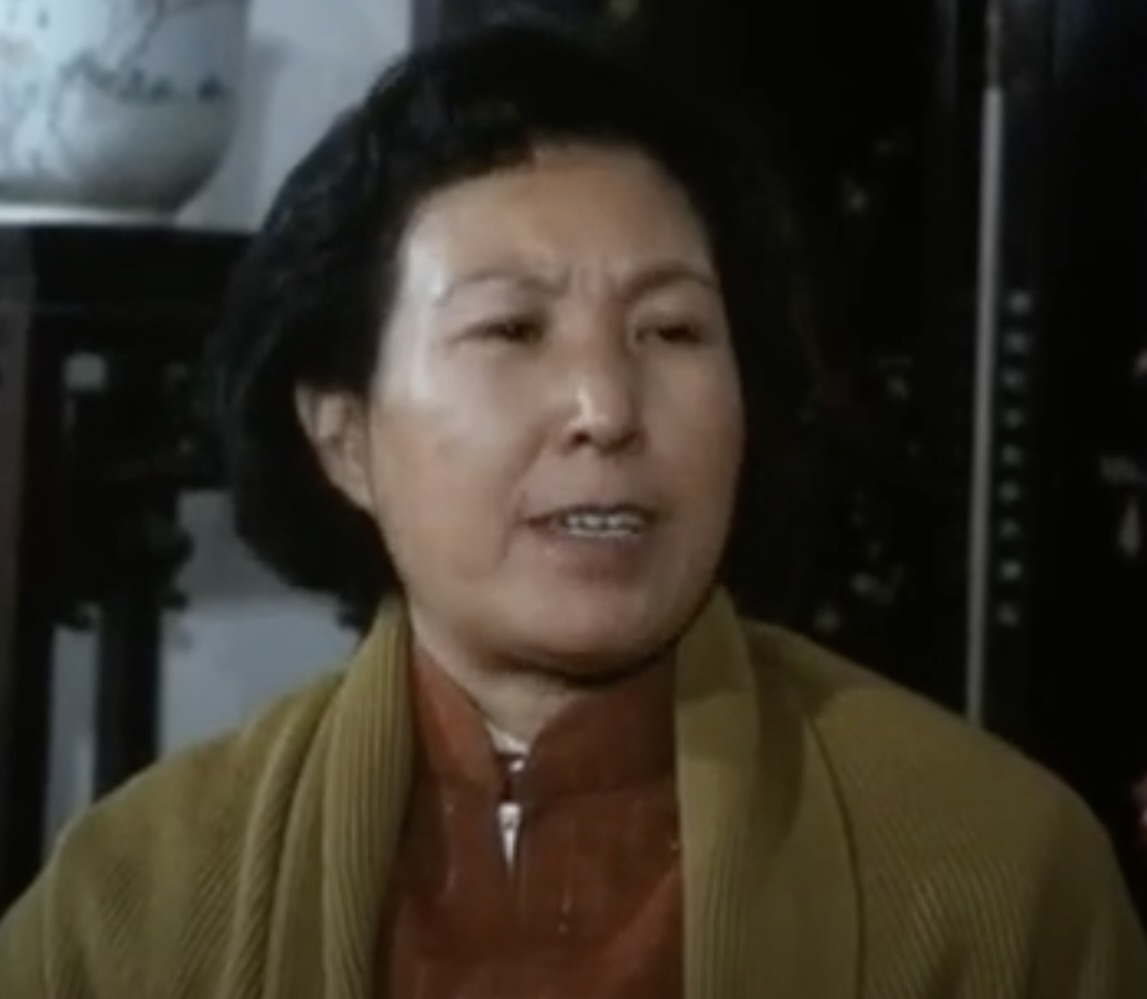|
Xuantong Emperor
Puyi (7 February 190617 October 1967) was the final emperor of China, reigning as the eleventh monarch of the Qing dynasty from 1908 to 1912. When the Guangxu Emperor died without an heir, Empress Dowager Cixi picked his nephew Puyi, aged two, to succeed him as the Xuantong Emperor. Puyi's father, Zaifeng, Prince Chun, served as regent before Puyi was forced to abdicate as a result of the Xinhai Revolution, which ended two millennia of imperial rule and established the Republic of China. The Empress Dowager Longyu signed the Imperial Edict of the Abdication of the Qing Emperor on Puyi's behalf, and in return the royal family was offered the Articles of Favorable Treatment, which allowed him to retain his imperial title and continue to live in the Forbidden City. From 1 to 12 July 1917, Puyi was briefly restored to the Qing throne by the loyalist general Zhang Xun. In 1924, he was expelled from the capital by warlord Feng Yuxiang after a coup, after which he found refuge ... [...More Info...] [...Related Items...] OR: [Wikipedia] [Google] [Baidu] |
Emperor Of The Qing Dynasty
The Qing dynasty (1644–1912) was a Manchu-led Dynasties of China, imperial Chinese dynasty and the last imperial dynasty of China. It was officially proclaimed in 1636 in Shenyang in what is now Northeast China, but only captured Beijing and succeeded the Ming dynasty in China proper in 1644. The Qing dynasty collapsed when the imperial clan (surnamed House of Aisin-Gioro, Aisin Gioro) abdicated in February 1912, a few months after Wuchang Uprising, a military uprising had started the 1911 Revolution, Xinhai Revolution that led to the foundation of the Republic of China (1912–1949), Republic of China. Nurhaci (1559–1626), khan of the Jurchen people, Jurchens, founded the Later Jin (1616–1636), Later Jin dynasty in 1616 in reference to the Jurchen-led Jin dynasty (1115–1234), Jin dynasty (1115–1234) that had once ruled over northern China. His son and successor Hong Taiji (1592–1643) renamed his people "Manchu people, Manchu" in 1635 and changed the name of Nurhaci's s ... [...More Info...] [...Related Items...] OR: [Wikipedia] [Google] [Baidu] |
Babaoshan Revolutionary Cemetery
The Babaoshan Revolutionary Cemetery () is Beijing's main resting place for the highest-ranking revolutionary heroes, high-ranking government officials and, in recent years, individuals deemed of major importance due to their contributions to society. In Chinese, ''Babaoshan'' literally means "The Eight-Treasure Mountains". The cemetery is located in Babaoshan Subdistrict, Shijingshan District, in western Beijing Municipality. History The Babaoshan Revolutionary Cemetery, with an area of 0.10 square kilometres and located in the western frontiers of Beijing's massive urban sprawl, was first built as a temple in honor of General Gang Bing, a Ming dynasty soldier who castrated himself as an act of obedience for the Yongle Emperor. The emperor designated the area surrounding the temple as the final resting place of concubines and eunuchs. Over time, the Taoist temple became a senior's home for retired eunuchs. The official name of the temple was (), roughly translating into Temp ... [...More Info...] [...Related Items...] OR: [Wikipedia] [Google] [Baidu] |
Seal (East Asia)
In the Sinosphere, seals (Seal (emblem), stamps) can be applied on objects to establish personal identification. They are commonly applied on items such as personal documents, office paperwork, contracts, and art. They are used similarly to signatures in the West. Unlike in the West, where Seal (emblem), wax seals are common, Sinosphere seals are used with ink. Of Chinese origin, the process soon spread beyond China and across East and Southeast Asia. Various countries in these regions currently use a mixture of seals and hand signatures, and, increasingly, electronic signatures. Chinese seals are typically made of Rock (geology), stone, sometimes of metals, wood, bamboo, plastic, or ivory, and are typically used with red ink or cinnabar paste ( zh, c=朱砂, p=zhūshā). The word 印 ("yìn" in Mandarin, "in" in Japanese and Korean, "ấn" and "in" in Vietnamese) specifically refers to the imprint created by the seal, as well as appearing in combination with other morphemes i ... [...More Info...] [...Related Items...] OR: [Wikipedia] [Google] [Baidu] |
Gūwalgiya
Gūwalgiya was one of the most powerful Manchu clans. It is often listed by historians as the first of the eight prominent Manchu clans of the Qing dynasty. After the demise of the dynasty, some of its descendants sinicized their clan name to the Han Chinese surname ''Guan'' (). History Origins and Early History The Gūwalgiya clan can be traced back to the Jurchen people in the early 13th century, specifically the Jianzhou Jurchen tribes. The Name "Gūwalgiya" originally had been referred to a geographical location and later on was adopted as a clan name. The clan is believed to have originated from the Yalu River region (present-day Liaoning Province), around the area known as Sā'ěrhǔ (萨尔浒). During the late 16th century, Gūwalgiya Gāha, the son of Gūwalgiya Sōngāli, became the chieftain of Sā'ěrhǔ (萨尔浒) and allied with Nurhaci, the founder of the Later Jin dynasty. This alliance was an important piece in the establishment of the Later Jin and l ... [...More Info...] [...Related Items...] OR: [Wikipedia] [Google] [Baidu] |
Youlan (Gūwalgiya)
Youlan (1884 – 30 September 1921), of the Manchu Plain White Banner Gūwalgiya clan, was a consort of Zaifeng and the mother of Puyi (Xuantong Emperor), the last emperor of China's Qing dynasty. Life Family background * Father: Ronglu (1836–1903), served as the Minister of Works from 1878 to 1879, the Minister of War from 1895 to 1898, the Viceroy of Zhili in 1898 and a Grand Secretary in the Wenhua Hall () from 1898 to 1902 and the Wenyuan Library from 1902 to 1903, and held the title of a first class baron () ** Paternal grandfather: Changshou (; d. 1852) ** Paternal grandmother: Lady Uja * Mother: Lady Aisin Gioro ** Maternal grandfather: Linggui (; 1815–1885), served as a Grand Secretary in the Tiren Library () from 1881 to 1884 and the Wuying Hall () from 1884 to 1885, Changning's great-great-great-great-great-great-grandson ** Maternal grandmother: Lady Sun * One sister: wife of Prince Li (禮) Chenghou Guangxu era Lady Gūwalgiya's father was a staunch suppor ... [...More Info...] [...Related Items...] OR: [Wikipedia] [Google] [Baidu] |
Qing
The Qing dynasty ( ), officially the Great Qing, was a Manchu-led Dynasties of China, imperial dynasty of China and an early modern empire in East Asia. The last imperial dynasty in Chinese history, the Qing dynasty was preceded by the Ming dynasty and succeeded by the Republic of China (1912–1949), Republic of China. At its height of power, the empire stretched from the Sea of Japan in the east to the Pamir Mountains in the west, and from the Mongolian Plateau in the north to the South China Sea in the south. Originally emerging from the Later Jin (1616–1636), Later Jin dynasty founded in 1616 and proclaimed in Shenyang in 1636, the dynasty seized control of the Ming capital Beijing and North China in 1644, traditionally considered the start of the dynasty's rule. The dynasty lasted until the Xinhai Revolution of October 1911 led to the abdication of the last emperor in February 1912. The multi-ethnic Qing dynasty Legacy of the Qing dynasty, assembled the territoria ... [...More Info...] [...Related Items...] OR: [Wikipedia] [Google] [Baidu] |
Aisin-Gioro
The House of Aisin-Gioro is a Manchu clan that ruled the Later Jin dynasty (1616–1636), the Qing dynasty (1636–1912), and Manchukuo (1932–1945) in the history of China. Under the Ming dynasty, members of the Aisin Gioro clan served as chiefs of the Jianzhou Jurchens, one of the three major Jurchen tribes at this time. Qing bannermen passed through the gates of the Great Wall in 1644, and eventually conquered the short-lived Shun dynasty, Xi dynasty and Southern Ming dynasty. After gaining total control of China proper, the Qing dynasty later expanded into other adjacent regions, including Xinjiang, Tibet, Outer Mongolia, and Taiwan. The dynasty reached its zenith during the High Qing era and under the Qianlong Emperor, who reigned from 1735 to 1796. This reign was followed by a century of gradual decline. The house lost power in 1912 following the Xinhai Revolution. Puyi, the last Aisin-Gioro emperor, nominally maintained his imperial title in the Forbidden City until t ... [...More Info...] [...Related Items...] OR: [Wikipedia] [Google] [Baidu] |
Mongolian Language
Mongolian is the Prestige (sociolinguistics), principal language of the Mongolic languages, Mongolic language family that originated in the Mongolian Plateau. It is spoken by ethnic Mongols and other closely related Mongolic peoples who are native to modern Mongolia and surrounding parts of East Asia, East, Central Asia, Central and North Asia. Mongolian is the official language of Mongolia and Inner Mongolia and a recognized language of Xinjiang and Qinghai. The number of speakers across all its dialects may be 5–6 million, including the vast majority of the residents of Mongolia and many of the Mongols in China, ethnic Mongol residents of the Inner Mongolia of China. In Mongolia, Khalkha Mongolian is predominant, and is currently written in both Cyrillic script, Cyrillic and the traditional Mongolian script. In Inner Mongolia, it is dialectally more diverse and written in the traditional Mongolian script. However, Mongols in both countries often use the Latin script for conve ... [...More Info...] [...Related Items...] OR: [Wikipedia] [Google] [Baidu] |
Manchu Language
Manchu ( ) is a critically endangered language, endangered Tungusic language native to the historical region of Manchuria in Northeast China. As the traditional native language of the Manchu people, Manchus, it was one of the official languages of the Qing dynasty (1644–1912) of China, although today the vast majority of Manchus speak only Mandarin Chinese. Several thousand can speak Manchu as a second language through governmental primary education or free classes for adults in classrooms or online. The Manchu language has high historical value for historians of China, especially for the Qing dynasty. Manchu-language texts supply information that is unavailable in Chinese, and when both Manchu and Chinese versions of a given text exist, they provide controls for understanding the Chinese. Like most Siberian languages, Manchu is an agglutinative language that demonstrates limited vowel harmony. It has been demonstrated that it is derived mainly from the Jurchen language thou ... [...More Info...] [...Related Items...] OR: [Wikipedia] [Google] [Baidu] |
Li Shuxian
Li Shuxian (; 4 September 1924 – 9 June 1997), was the fifth and last wife of Puyi, the last emperor of the Qing dynasty in China. Biography Li was ethnic Han Chinese The Han Chinese, alternatively the Han people, are an East Asian people, East Asian ethnic group native to Greater China. With a global population of over 1.4 billion, the Han Chinese are the list of contemporary ethnic groups, world's la ... and orphaned by the age of 14. After three years in foster care, her foster mother attempted to enter her into concubinage with a wealthy man. Li refused, and ran away to Beijing to become a hospital worker. In 1959, after ten years in prison, Puyi was pardoned. The pair were introduced to one another by a friend in 1962 and wed that same year. Premier Zhou Enlai approved their marriage. It was Li's third marriage, and Puyi's fifth. They had no children. She remained with Puyi to his last days. After her husband's death, Li retired from public life. She was not ... [...More Info...] [...Related Items...] OR: [Wikipedia] [Google] [Baidu] |
Li Yuqin
Li Yuqin (15 July 1928 – 24 April 2001), sometimes referred to as the "Last Imperial Concubine" (), was the fourth wife of China's last emperor Puyi. She married Puyi when the latter was the nominal ruler of Manchukuo, a puppet state established by the Empire of Japan during the Second Sino-Japanese War. Biography Li Yuqin was a Han Chinese woman who was born in Changchun to a middle class family from Shandong. Her father, Li Degui was a translator to a local missionary organisation, while her mother, Wang Xiuru, was the owner of a small silk farm in Changchun’s outskirts. Both sides of Li’s family served the imperial court, with her paternal great grandmother being the wet nurse to the Xianfeng Emperor’s daughter and her maternal family being court physicians. After the fall of the Qing dynasty, many people who worked in the imperial court were banished by republican forces to the countryside provinces, which is how the Li family ended up in the commoner class. Li had t ... [...More Info...] [...Related Items...] OR: [Wikipedia] [Google] [Baidu] |
Tan Yuling
Tan Yuling, Noble Consort Mingxian (born Tatara Yuling; 11 August 1920 – 14 August 1942), was a concubine of China's last emperor Puyi. She married Puyi when the latter was the nominal emperor of the puppet state of Manchukuo during the Second Sino-Japanese War. Her given name "Yuling" is sometimes translated into English as "Jade Years". Biography Yuling was born to the prosperous Tatara clan in Beijing, her family is a Manchu noble family. Her father Zhaoxu was a high-ranking warlord who administered the area around Beijing and Tianjin. Yuling's two aunts were in the Guangxu Emperor's harem as Consort Jin and Consort Zhen. Tan Yuling lost her parents when she was young, and she and her brother Tan Zhiyuan were raised by their aunt. Even after the Qing Dynasty fell, the Tatara clan continued to be very prosperous, but they changed their names to Tan, to avoid being discriminated for their Manchu ethnicity. In early 1937, when Tan was still attending a middle school in Beij ... [...More Info...] [...Related Items...] OR: [Wikipedia] [Google] [Baidu] |







